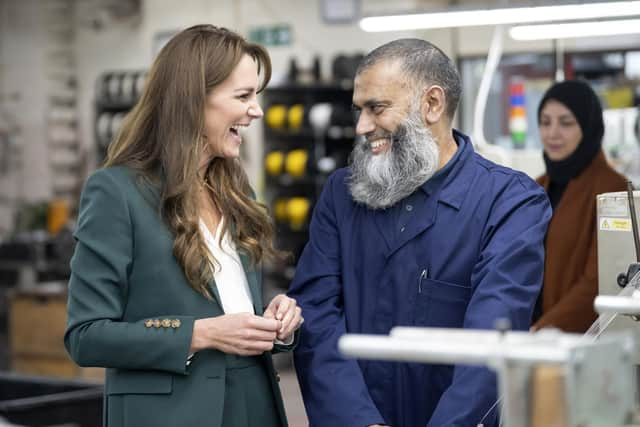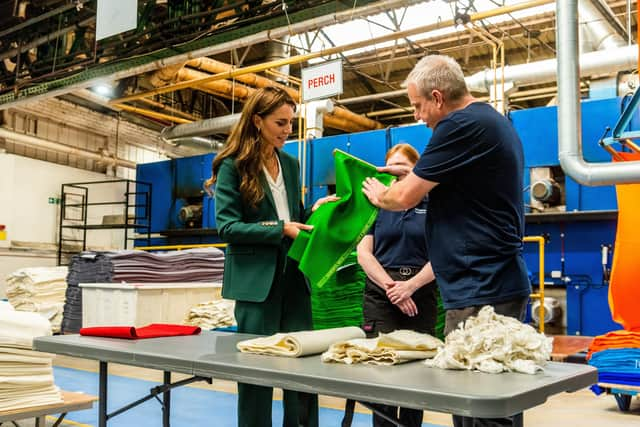Princess of Wales impressed by 'family essence' at Yorkshire textile mill
But when Kate visited the company's textile mill in Stanningley yesterday (Sep 26) she was told that staff still use many of the same traditional techniques when they produce fabrics fit for a future king.
AW Hainsworth, which holds a royal warrant, has proudly produced textiles for various royal events, including the military uniform Prince William wore to his brother’s wedding in 2018.
Advertisement
Hide AdAdvertisement
Hide AdThe princess, who was unphased by the heat and noise of the mill, listened intently as workers talked her through the process of transforming bundles of yarn into everything from blankets and snooker table cloths to woven felts for musical instruments and the distinctive red tunics donned by the King’s Guard at Buckingham Palace.


Amanda McLaren, AW Hainsworth’s managing director who led the tour, said the royal was “fascinated by some of the traditional processes.”
She added: “I think she recognises the UK textile sector needs the spotlight, the support and long-term encouragement in this country so we can have mills like this withstand many hundreds of years ahead. It’s so important.
"People still aspire to British-made manufactured textiles. We should be proud of that as a nation.”
Advertisement
Hide AdAdvertisement
Hide AdThe Princess was inquisitive throughout the tour, as crowds of well wishers gathered outside the gates to catch a glimpse of her.


She had plenty of questions for the experienced weavers who operate the mechanical looms, the staff who dye tunics worn by soldiers in the King’s Guard and the researchers who test fire-resistant uniforms designed for firefighters.
But the princess was not only interested in the processes used by a company which has been manufacturing woollen cloth in Yorkshire since 1783 – she was also eager to find out about challenges facing the factory, including the shortage of young people who are interested in a career in textiles, and the working culture.
“There seems to be a real family essence to the place,” she told one member of staff. “It’s really great to see.”
Advertisement
Hide AdAdvertisement
Hide AdThe Princess’s great grandfather Noel Middleton sold the woollen manufacturer and merchant William Lupton & Co to AW Hainsworth in 1958.
The business had belonged to his wife, Olive Lupton, but he became the director after they married in 1914 and he decided to sell it after she died.
The couple shared three sons – Christopher, Anthony and Peter. That latter is Catherine’s grandfather.
Rachel Hainsworth, whose father oversaw the purchase of William Lupton & Co in 1958, said her family wanted to buy the business because it produced a hugely popular product.
Advertisement
Hide AdAdvertisement
Hide Ad“They made collar meltons that went underneath formal suitings in 120 different colours and the Leeds clothiers didn’t want to lose that manufacturer,” she said.
“We’re still making collar meltons today, but not as many as there obviously isn’t as much formal wear out there.”